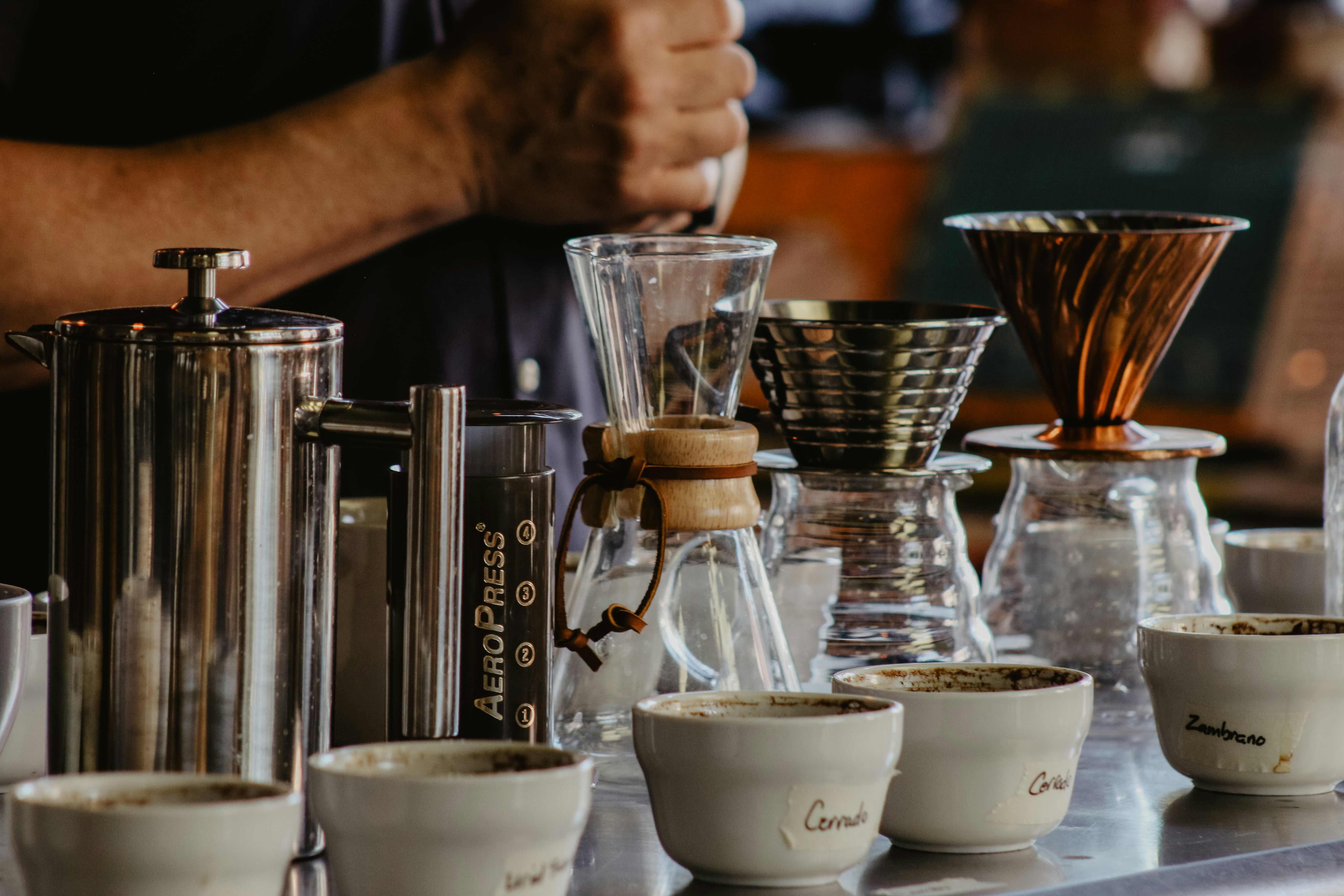
Introduction
Coffee, often dubbed the lifeblood of many morning routines, boasts a delightful diversity. The brewing method chosen can profoundly influence its taste and quality. In this exploration, we’ll contrast two beloved brewing methods: the French Press and Pourover Coffee. By examining seven key features - ease of use, brewing time, flavor profile, versatility in brewing strength, cleanup process, equipment cost, and portability - we aim to guide both seasoned baristas and casual coffee drinkers in their quest for the perfect brew. So, with your favorite mug in hand, let’s embark on this caffeinated exploration of French Press versus Pourover Coffee.
Ease of Use
Both the French Press and Pourover methods come with their set of advantages and challenges. The French Press is often seen as the more user-friendly option. Simply add coffee grounds, pour in hot water, steep, and then press the plunger to separate the brew from the grounds. No meticulous pouring or monitoring required.
Conversely, Pourover Coffee demands more attention. It entails pouring hot water over coffee grounds in a filter, ensuring even saturation and proper extraction. While this method might require a learning curve, it offers greater control over extraction time and water temperature.
In essence, if simplicity is your mantra, the French Press might be your ally. But if you relish the art of brewing, the Pourover beckons.
Brewing Time
Time is of the essence, especially when it comes to your morning brew. A French Press typically clocks in at 4-5 minutes, encompassing boiling, initial pouring, and steeping.
Pourover Coffee, however, can vary. After boiling, there’s filter pre-wetting, blooming, and a 2-3 minute pour, totaling around 4-6 minutes.
While both methods are swift compared to other techniques, the French Press, with its straightforward process, might save you a precious minute or two. Yet, for those who savor the brewing ritual, the Pourover’s pace might be just right.
Flavor Profile
The brewing method can be a game-changer for flavor. The French Press offers a rich, full-bodied experience, thanks to the direct steeping of grounds in water and the metal filter allowing more oils and fine particles into the brew.
In contrast, Pourover Coffee, with its paper filter, delivers a cleaner, brighter cup, emphasizing the distinct attributes of different coffee beans.
In short, if you’re inclined towards bold flavors, the French Press awaits. But if clarity and complexity are your cup of tea (or coffee), Pourover is the way to go.
Versatility in Brewing Strength
Both methods offer flexibility in brewing strength, albeit differently. With the French Press, adjusting steeping time directly influences the brew’s robustness. Pourover’s strength, meanwhile, hinges on the pouring speed, demanding consistent water flow and temperature.
In a nutshell, while both methods cater to varied strength preferences, the French Press offers straightforward adjustments, whereas Pourover appeals to those keen on refining their technique.
Cleanup Process
Cleanup, though often sidelined, is crucial. The French Press, with its wet coffee grounds, can be a bit cumbersome to clean, especially with potential oil build-up over time.
Pourover Coffee, in contrast, is a breeze to clean. Post-brew, discard the paper filter and give the dripper a quick rinse.
For those prioritizing easy cleanup, Pourover might have a slight advantage.
Equipment Cost
Cost-wise, both methods are relatively wallet-friendly. A decent French Press ranges from $20-$40, with minimal ongoing expenses unless the carafe breaks.
Pourover gear, however, can vary. While basic setups are affordable, high-end drippers and regular paper filter replacements can add up.
In terms of cost-effectiveness, the French Press might have a slight edge, given its durability and fewer recurring expenses.
Portability
For on-the-go coffee aficionados, portability is paramount. While compact French Press models exist, they’re inherently bulkier than most Pourover setups. Pourover drippers, being lightweight and sometimes collapsible, are travel-friendly, though they do require carrying and disposing of paper filters.
In terms of travel efficiency, Pourover might outshine the French Press, but the latter could be more convenient without the need for disposable filters.
Conclusion
The choice between French Press and Pourover Coffee hinges on personal preference. Whether you seek simplicity and robust flavor or cherish the brewing ritual and nuanced flavors, there’s a method tailored for you. Ultimately, it’s about discovering what resonates with your palate and lifestyle.